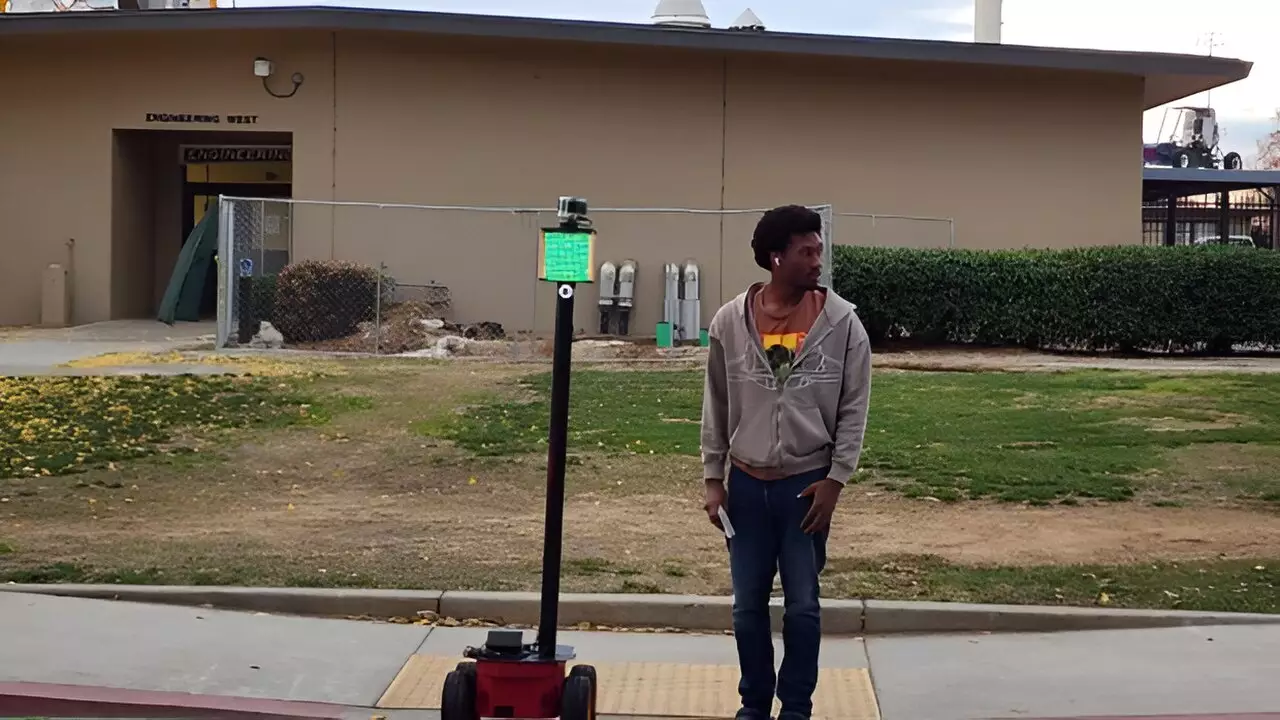Upon first glance, CrossBot may appear to be a simple prototype resembling a lawnmower with a single black pole and a tablet-sized screen. However, don’t let its unassuming appearance fool you. Created by Hovannes Kulhandjian, an associate professor in electrical and computer engineering at Fresno State, CrossBot is a powerful device designed to protect children in crosswalks and potentially alleviate the crossing guard shortage in the Bay Area.
Equipped with advanced sensors, including Lidar, a microphone, radar, video camera capabilities, a speaker system, and sophisticated algorithms, CrossBot operates with precision and accuracy. In a demonstration video, the robot showcases its ability to assess its surroundings, wait for clear traffic, and signal to pedestrians when it’s safe to cross. With a 360-degree view of the environment, CrossBot prioritizes safety, especially when dealing with the vulnerability of children.
While Kulhandjian envisions CrossBot as a beneficial addition to crosswalk safety measures, not all parents are convinced. Some express concerns about the reliability of a robotic crossing guard compared to human guards who offer familiarity and a personal touch. The potential for malfunctions or hacking also raises skepticism among parents who value the human presence at intersections.
Despite reservations from some parents, the demand for crossing guards remains a pressing issue in many school districts. The disruption caused by the pandemic has exacerbated the shortage of crossing guards, leading to concerns about pedestrian safety, particularly for children. With districts like San Jose, Oakland, Los Altos, San Francisco, and Pleasant Hill reporting difficulties in retaining crossing guards, the need for innovative solutions like CrossBot becomes more apparent.
The statistics on pedestrian-related accidents highlight the urgency of improving crosswalk safety. As the second-leading cause of death for children under 14, pedestrian accidents pose a significant threat to public safety. With over 7,500 pedestrian fatalities in 2022 alone, according to the Governors Highway Safety Association, the need for effective measures to protect pedestrians is evident.
In a world where technology plays an increasingly prominent role in various industries, the integration of robots for everyday tasks has become more common. From handling logistics in warehouses to performing security inspections in airports, robots are versatile tools that offer efficiency and precision. The projected growth of the global robotics market further underscores the significance of robotics in modern society.
Kulhandjian emphasizes that CrossBot is not intended to replace human crossing guards but rather complement and enhance their efforts. With the persistent shortage of crossing guards in the Bay Area, CrossBot represents a potential solution to bridge the gap in ensuring pedestrian safety. While concerns about job displacement may arise, Kulhandjian’s vision for CrossBot aligns with the idea of collaboration between humans and technology.
The emergence of innovative solutions like CrossBot reflects the ongoing evolution of technology in addressing societal challenges. As we navigate the complexities of pedestrian safety and the shortage of crossing guards, the integration of robotics offers a promising avenue for enhancing safety measures. While debates may persist regarding the role of technology in safeguarding pedestrians, the potential of CrossBot to improve crosswalk safety and mitigate risks for vulnerable road users marks a significant step towards a safer and more technologically advanced future.


Leave a Reply